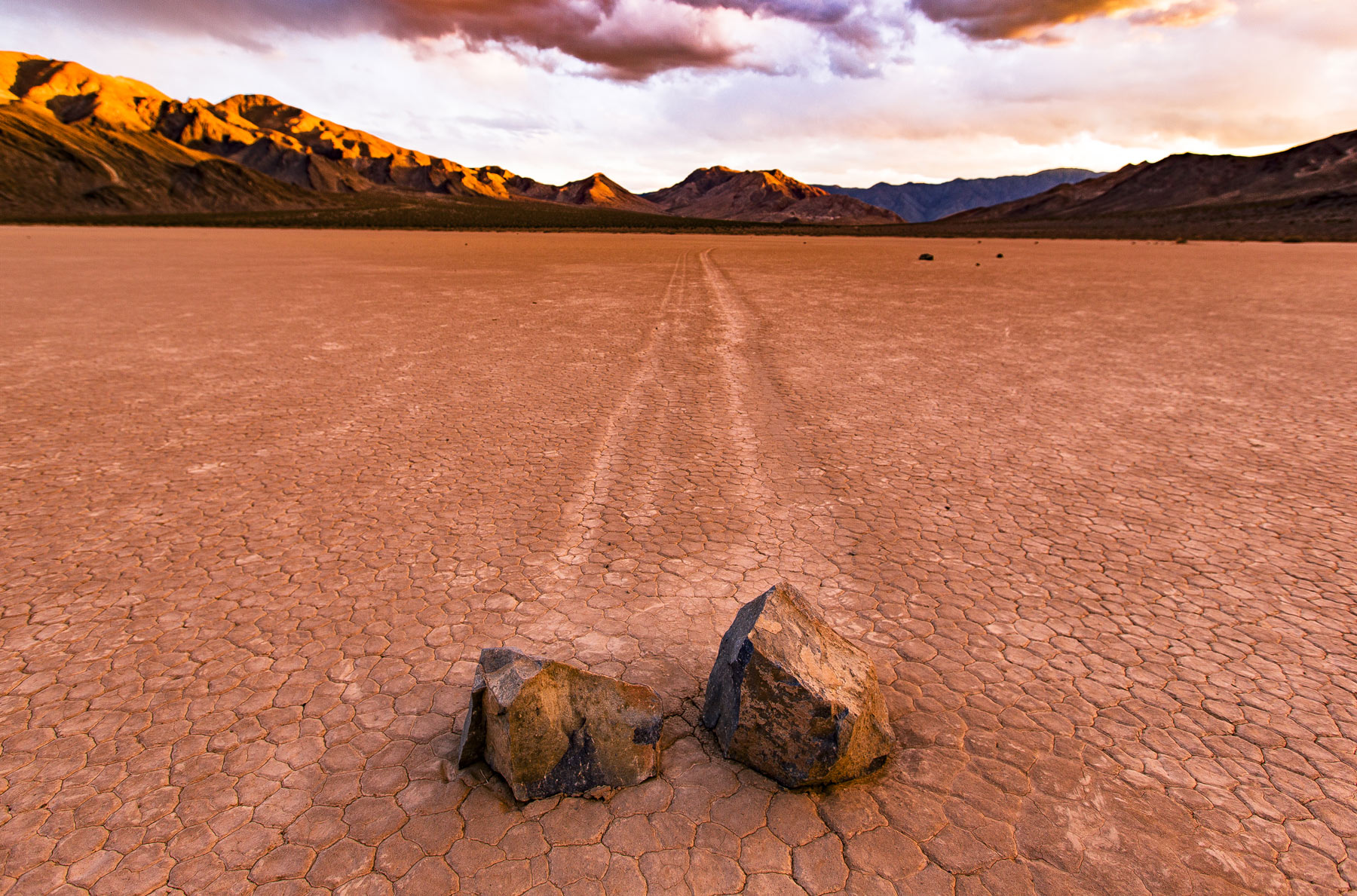
The Racetrack Playa at Death Valley National Park features rocks that mysteriously move across the cracked desert floor leaving long trails and lots of intrigue.
It is strongly advised that if you are planning to go the the Racetrack Playa that you do so using a high clearance vehicle as the road is pretty rough.
Make sure to pack plenty of sunscreen, water, & a snack as the closest services (or service) are a minimum 2-3 hour drive from the Racetrack Playa.
RELATED: Comprehensive Death Valley National Park Guide
Protect Racetrack Playa
This location is special and sadly has not always been treated as such. In recent years incidents have occurred with park visitors driving a vehicle on the Racetrack Playa.
Despite extensive efforts to repair the damage done the scars are still visible and will be for many years to come. DO NOT drive off marked roads here or anywhere else in the park.
If you see someone doing so be sure to take photos, record their license plate number, and file a report at the closest ranger station.
RELATED: 10+ (FASCINATING) Death Valley National Park Facts You Probably Didn’t Know
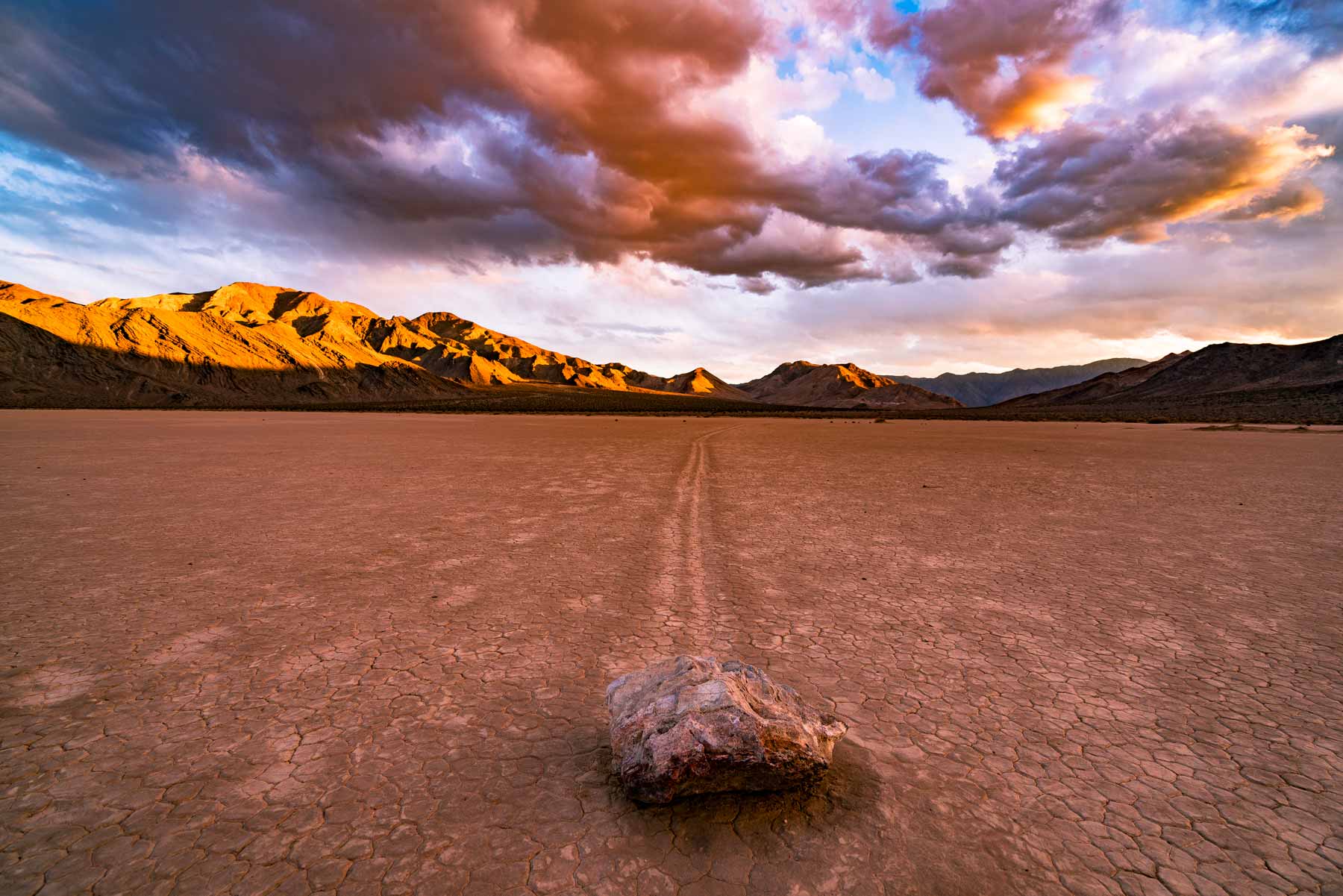
Best Time to Visit Racetrack Playa
The best time to visit the Racetrack Playa is around sunset to watch the sky light up with a dazzling display of color. Sunrise and night time here can also be dazzling.
RELATED: 16 STUNNING Things to Do in Death Valley National Park 2021
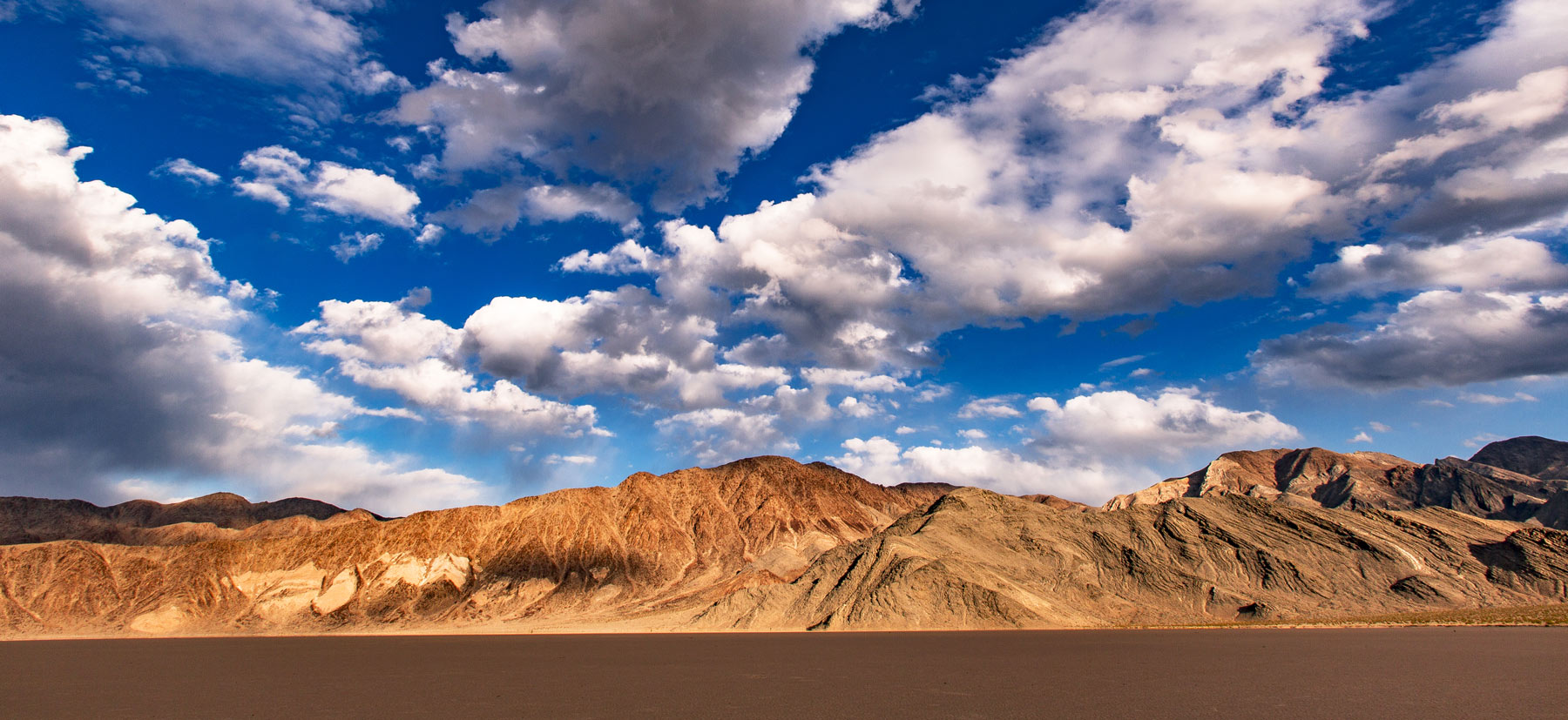
Things to Note When Visiting Racetrack Playa
Entrance Fees: The fee to enter Death Valley is $30 per vehicle. If you plan on visiting more than 1 national park this year we suggest you go ahead and purchase the America the Beautiful Pass (which can be found at the entrance gates to most national parks or online here). This pass gets you into all National Parks, Forests, Monuments, and more including 2,000 sites for free after a one time $79 fee.
Guide: I highly recommend this one.
Map: I use this one.
Provisions: Make sure to pack plenty of food & water – there are no services anywhere remotely close to Racetrack Playa.
TREAD LIGHTLY: The desert floor at the Racetrack Playa is extremely sensitive so walk lightly. In years past people have driven a vehicle on this surface and despite massive repair efforts undertaken by the park service the damage will take many, many years to full recover.
Sunscreen: For many of us visiting national parks in the summer means lots of sun. Seriously, some of these parks can zap you if you don’t wear sunscreen. We happen to like this one because it works AND it’s not full of a bunch of chemicals.
Leave No Trace: We’re big fans of Leave No Trace, here at MTJP. Want to learn more? Read about the seven principals of Leave No Trace here.
Flat Tires: Have a plan in case you get a flat tire on the long and bumpy road out to the racetrack.
Where to Stay in Death Valley
Visiting Death Valley National Park? If you haven’t decided where to stay (yet) check out our helpful guide on visiting Death Valley National Park for tips. Don’t have time? Here’s our favorite hotel in Death Valley.
About Death Valley
Situated on California’s southeastern border with Nevada, Death Valley National Park spans over 5,000 square miles of otherworldly vistas. The largest national park in the continental United States, Death Valley is a park for superlatives.
Death Valley is the hottest place on earth, the lowest place in North America, and the driest place in the United States. Death Valley is also the largest National Park outside of Alaska.

Watch the Award-Winning Death Valley Video
In the remote far reaches of the Mojave Desert lies the largest national park in the continental United States. Hidden here in the hottest place on earth is another world full of diverse life and colorful landscapes.
Join us as we take life to the extreme and explore Death Valley. Filmed primarily in 8K.
Racetrack Playa Map
Why Listen to Us About Visiting National Parks?
You should probably know that we don’t just make this stuff up out of thin air. We’ve spent our entire adult lives exploring and filming America’s national parks and public lands.
We’ve worked with the National Park Service, the Department of Interior, and the U.S. Forest Service for years creating films on important places and issues.
Our work has been featured in leading publications all over the world and even some people outside of our immediate family call us national parks experts.
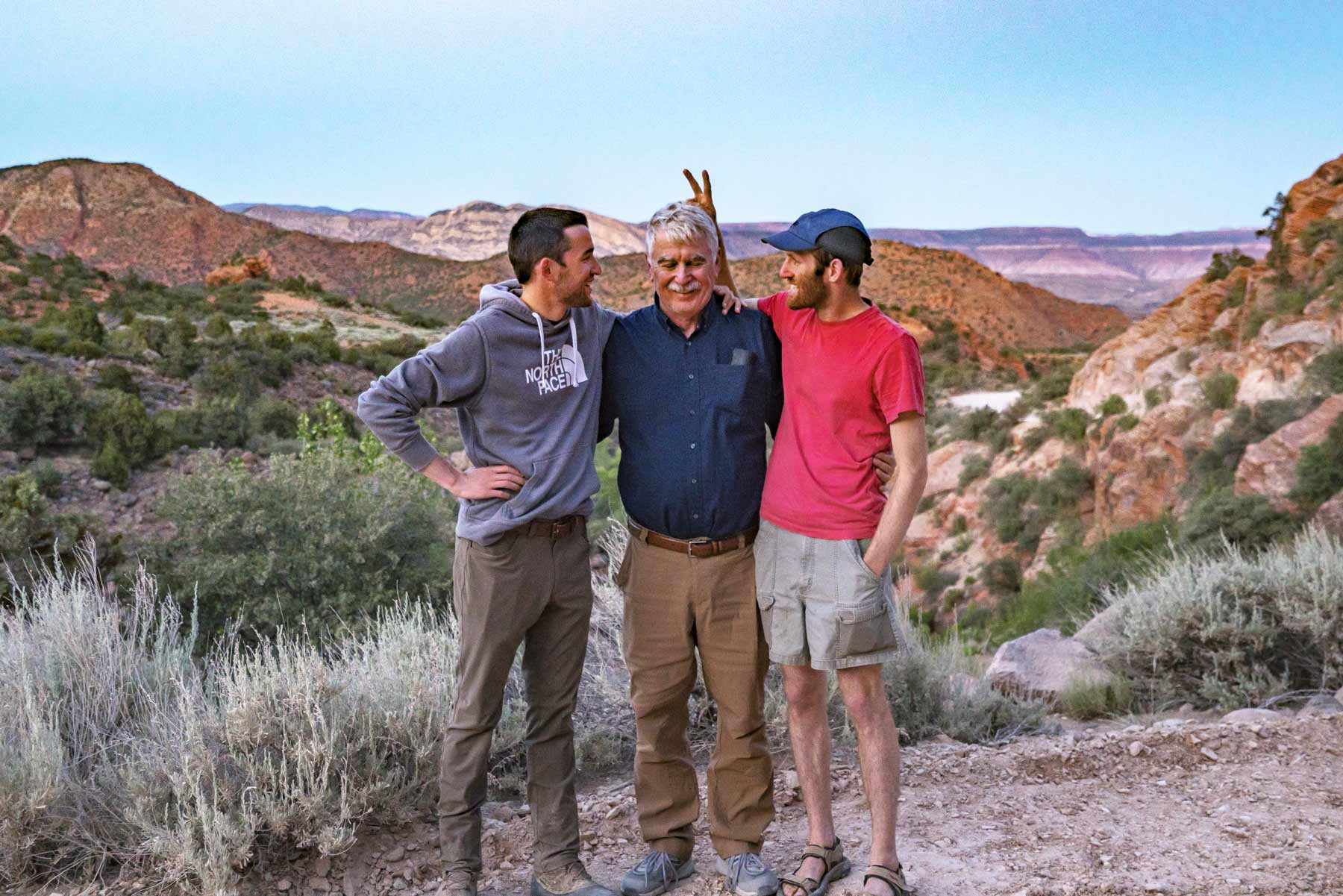
We’re Jim Pattiz and Will Pattiz, collectively known as the Pattiz Brothers.
Our goal here at More Than Just Parks is to share the beauty of America’s national parks and public lands through stunning short films in an effort to get Americans and the world to see the true value in land conservation.
If you’d like to follow along our journey we’d be delighted to have you!
And a bonus! Tips for Visiting a National Park
Permit Systems and Reservations
Check to see if the national park you’re visiting has a permit or reservation system in place before visiting. As parks become increasingly crowded more has to be done to safeguard them which means controlling the hundreds of millions of people who visit these places each year.
Popular national parks with reservation systems of some kind include Yosemite, Yellowstone, Zion, Rocky Mountain, Glacier, Arches, Acadia, Denali, and more.
Want Less Crowds? Try a National Forest!
Try visiting a national forest while you’re on your trip to avoid the crowds. There are 155 national forests in America, many of which are equally as beautiful as the national parks they neighbor and only see a fraction of the visitors.
For example, try the Flathead National Forest next to Glacier National Park, the Bridger-Teton next to Grand Teton, and the Dixie which borders nearly all of the Utah National Parks.
Practice Safety, Seriously
National parks are amazing but wild places so it is essential to practice basic safety while visiting them. Every year people die while vacationing in national parks. This is easily avoided by:
- Sticking to trails
- Checking the weather before going out on a hike
- Maintaining a safe distance between wildlife which means at least 25 yards from most wildlife and 100 yards from predators
- Avoid ledges with steep drop offs
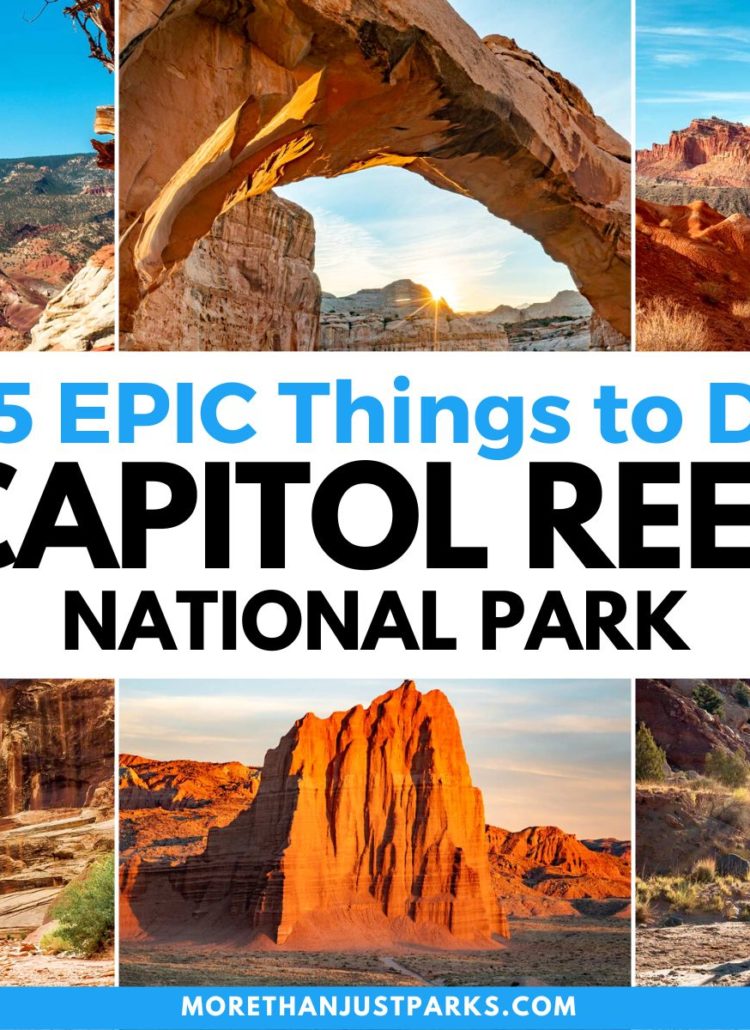

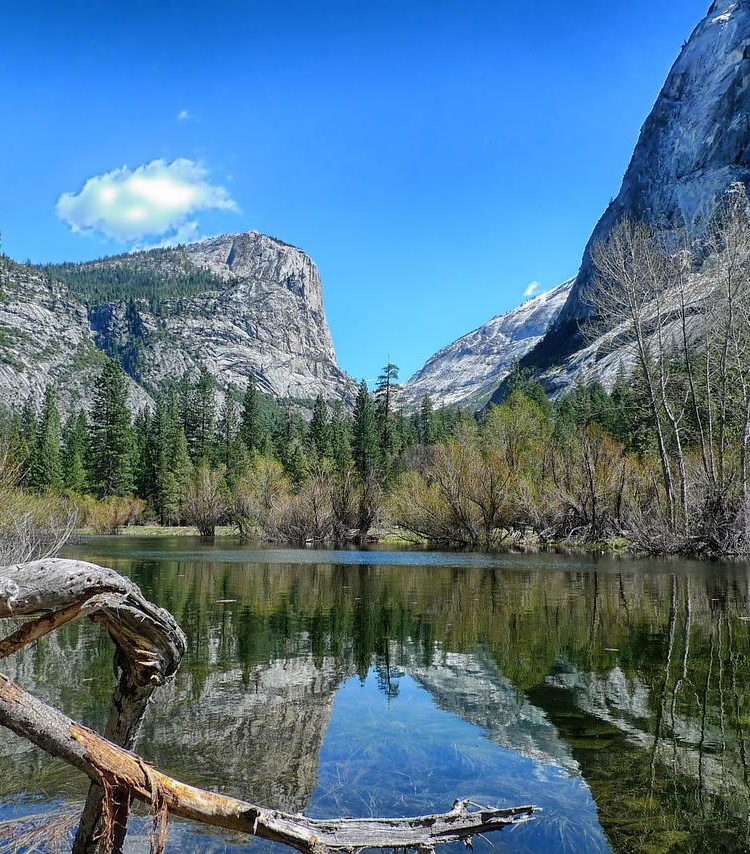


Leave a Reply